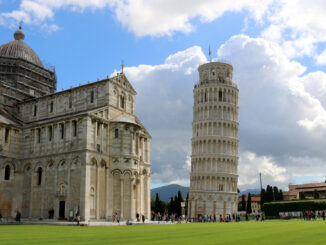SAN GIMIGNANO, Italy — In the brisk air of a November night, I sit with friends and sip a glass of wine. My eyes wander, looking out as the sun sets over the green Italian countryside.
There’s a certain charm to a walled city sitting atop a Tuscan hill. It’s a feeling that cannot be matched.
It’s known as “la citta’ dalle belle torri” – “The Town of Beautiful Towers” – for a reason. It must have been quite the sight for weary travelers to stumble upon, tired from their long journey. The city of impressive beauty today holds many secrets, and walking along the narrow city streets, it’s easy to feel as though you’ve stepped back in time.
Founded by the Etruscans, San Gimignano dates back to the third century BC. The city might be 2,300 years old, but it wasn’t until the 10th century that its history was documented. Just before 1000, the city’s first walls were built. Over the years, pilgrims traveling over the Francigena Way heading toward Rome and Vatican City stopped in the city. All was well with the city until the mid-14th century, when along with much of Europe, the plague hit. With that, the city became second fiddle to Florence.
Sitting atop the hill, the town can be seen from miles around. It’s a rather impressive presence – the medieval towers standing out. Rich families are to thank for the construction of the towers. In addition to lodgings and fortresses, the towers were as much about prestige. Unfortunately, towers in many cities no longer stand. But in San Gimignano, more than a dozen of the town’s roughly 70 original towers remain.
It’s interesting to see the juxtaposition of new cars driving past the old city walls, the bricks showing the signs of centuries of wear and tear. Yet, it’s the modern-day vehicles, not the old walls that seem out of place. It these walls could talk, the stories they could tell – centuries of grandeur, followed struggle and strife. The walls were there when the city was at its finest, and they were there when the city struggled. They are what remains of the town that Saint Geminianus – the city’s namesake – defended from the attack of Attila’s Huns.




